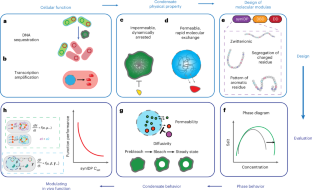プラスチックや植物の廃棄物をリサイクルするバクテリアベースのプラットフォームにつながる新情報を発見 New information could lead to bacteria-based platforms that recycle plastic and plant waste
2023-02-06 ノースウェスタン大学
◆ノースウェスタン大学が主導した新しい研究で、研究者は初めて、C. testosteroniが一見消化できないように見えるものを消化できる代謝メカニズムを解読しました。この新しい情報は、プラスチック廃棄物のリサイクルに役立つバクテリアを利用した新しいバイオテクノロジープラットフォームにつながる可能性があります。
◆この研究成果は、2月6日発行の米国科学雑誌『Nature Chemical Biology』に掲載されました。
◆Comamonas属の細菌は、土壌や下水汚泥など、ほぼすべての場所に生息しています。C. testosteroniが最初に研究者の注意を引いたのは、洗濯用合成洗剤を消化する自然な能力でした。さらに分析を進めると、この天然細菌はプラスチックやリグニン(植物から出る繊維状の木質廃棄物)由来の化合物も分解することがわかりました。
◆プラスチック廃棄物を分解するバクテリアを開発した研究者は他にもいますが、アリスティルデは、プラスチックを消化する自然の能力を持つバクテリアの方が、大規模なリサイクルへの応用に有望だと考えています。
◆「土壌細菌は、地球上に蓄積された廃棄物を処理するために利用できる、未開拓の天然由来の生化学反応の資源です」と、ノースウェスタン大学のLudmilla Aristildeは述べています。「C. testosteroniの代謝は、さまざまなレベルで制御されており、それらのレベルは統合されていることを発見しました。微生物学の力は素晴らしく、循環型経済を確立する上で重要な役割を果たす可能性があります。”
<関連情報>
- https://news.northwestern.edu/stories/2023/02/new-external-story/
- https://www.nature.com/articles/s41589-022-01237-7
多様な芳香族炭素代謝を担うComamonasプラットフォームにおける複雑な制御機構 Complex regulation in a Comamonas platform for diverse aromatic carbon metabolism
Rebecca A. Wilkes,Jacob Waldbauer,Austin Caroll,Manuel Nieto-Domínguez,Darren J. Parker,Lichun Zhang,Adam M. Guss & Ludmilla Aristilde
Nature Chemical Biology Published:06 February 2023
DOI:https://doi.org/10.1038/s41589-022-01237-7

Abstract
Critical to a sustainable energy future are microbial platforms that can process aromatic carbons from the largely untapped reservoir of lignin and plastic feedstocks. Comamonas species present promising bacterial candidates for such platforms because they can use a range of natural and xenobiotic aromatic compounds and often possess innate genetic constraints that avoid competition with sugars. However, the metabolic reactions of these species are underexplored, and the regulatory mechanisms are unknown. Here we identify multilevel regulation in the conversion of lignin-related natural aromatic compounds, 4-hydroxybenzoate and vanillate, and the plastics-related xenobiotic aromatic compound, terephthalate, in Comamonas testosteroni KF-1. Transcription-level regulation controls initial catabolism and cleavage, but metabolite-level thermodynamic regulation governs fluxes in central carbon metabolism. Quantitative 13C mapping of tricarboxylic acid cycle and cataplerotic reactions elucidates key carbon routing not evident from enzyme abundance changes. This scheme of transcriptional activation coupled with metabolic fine-tuning challenges outcome predictions during metabolic manipulations.


